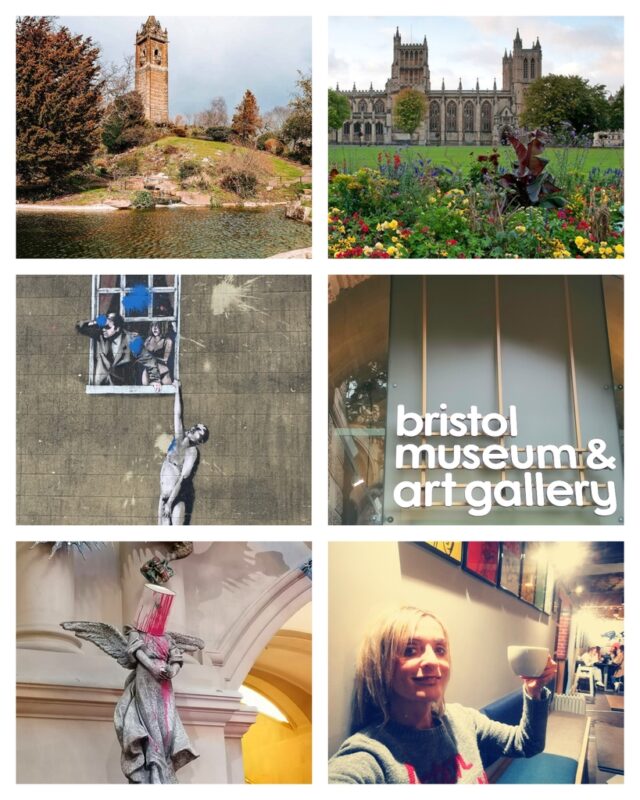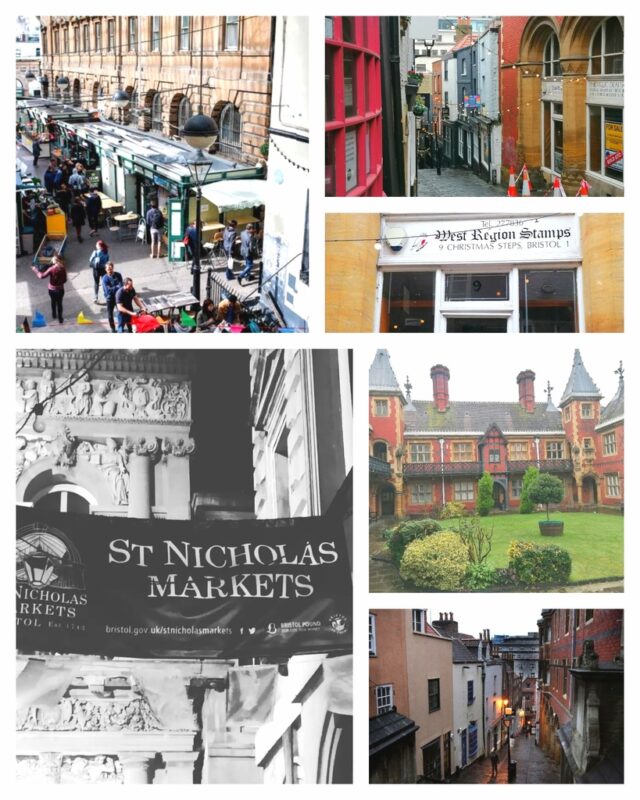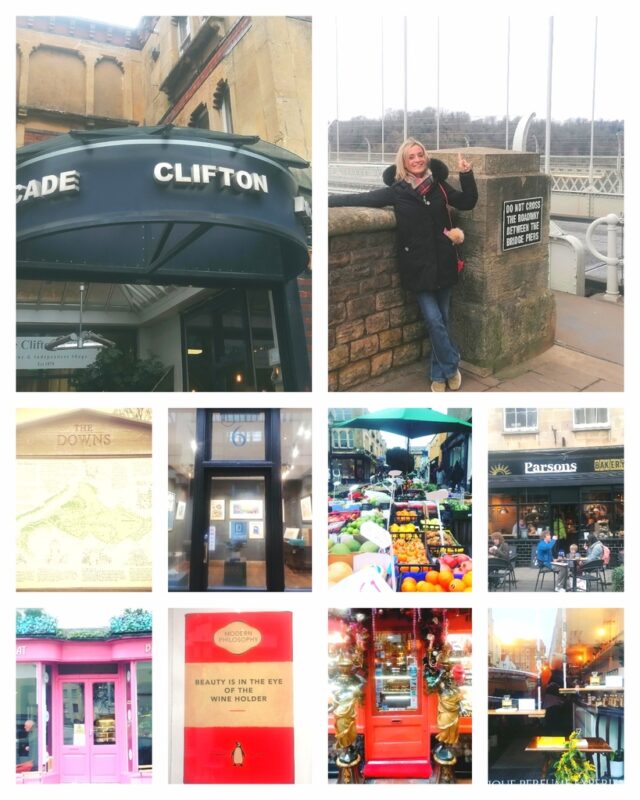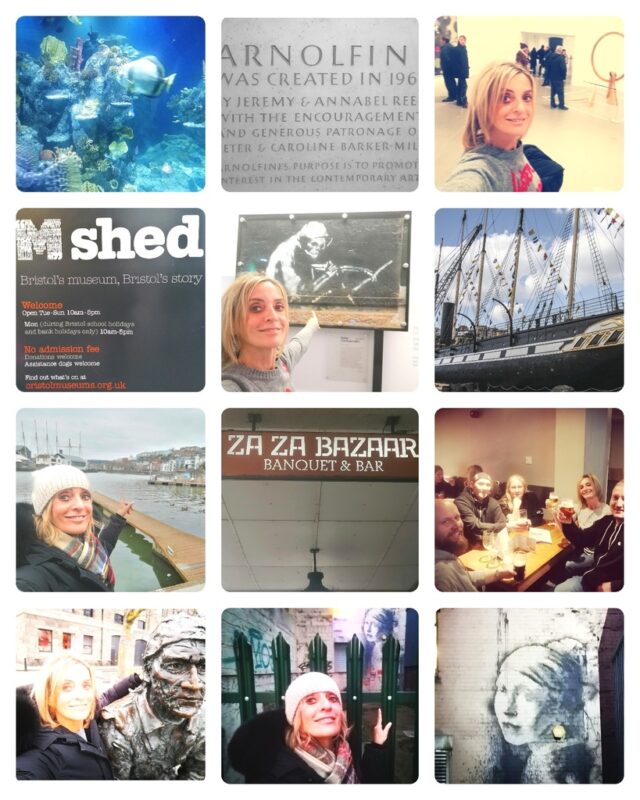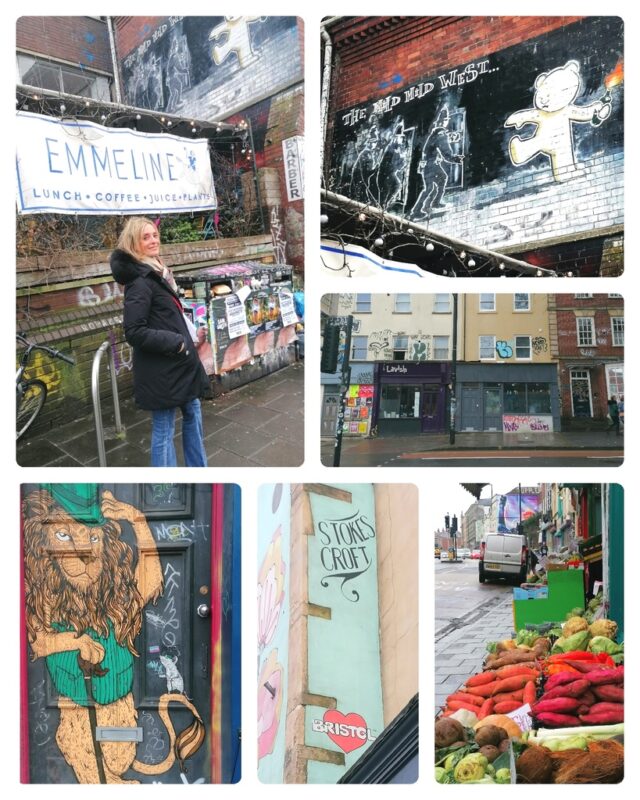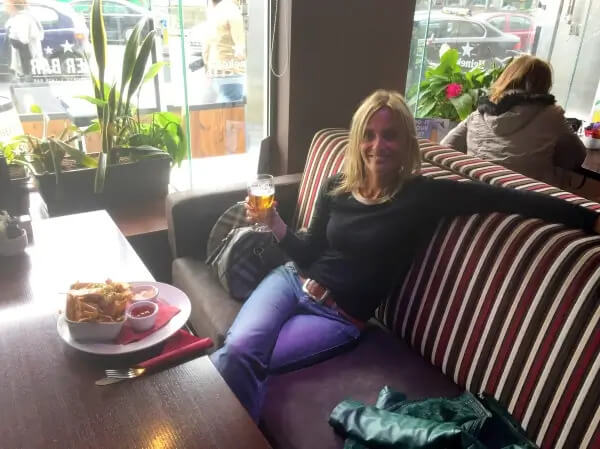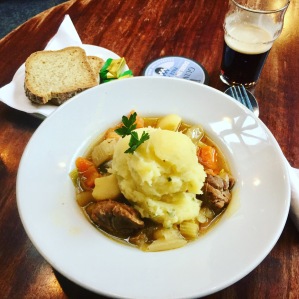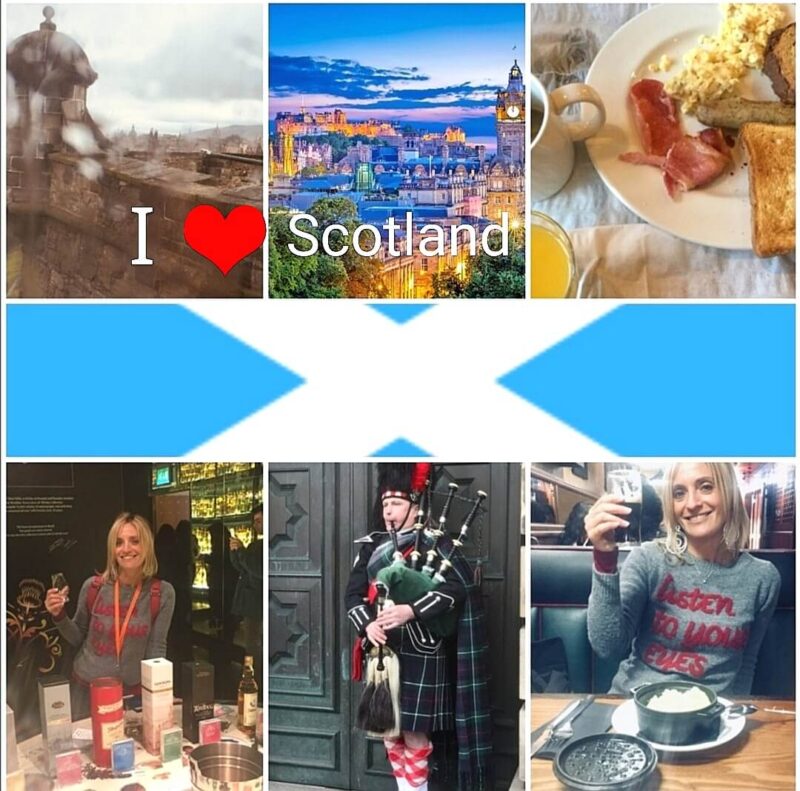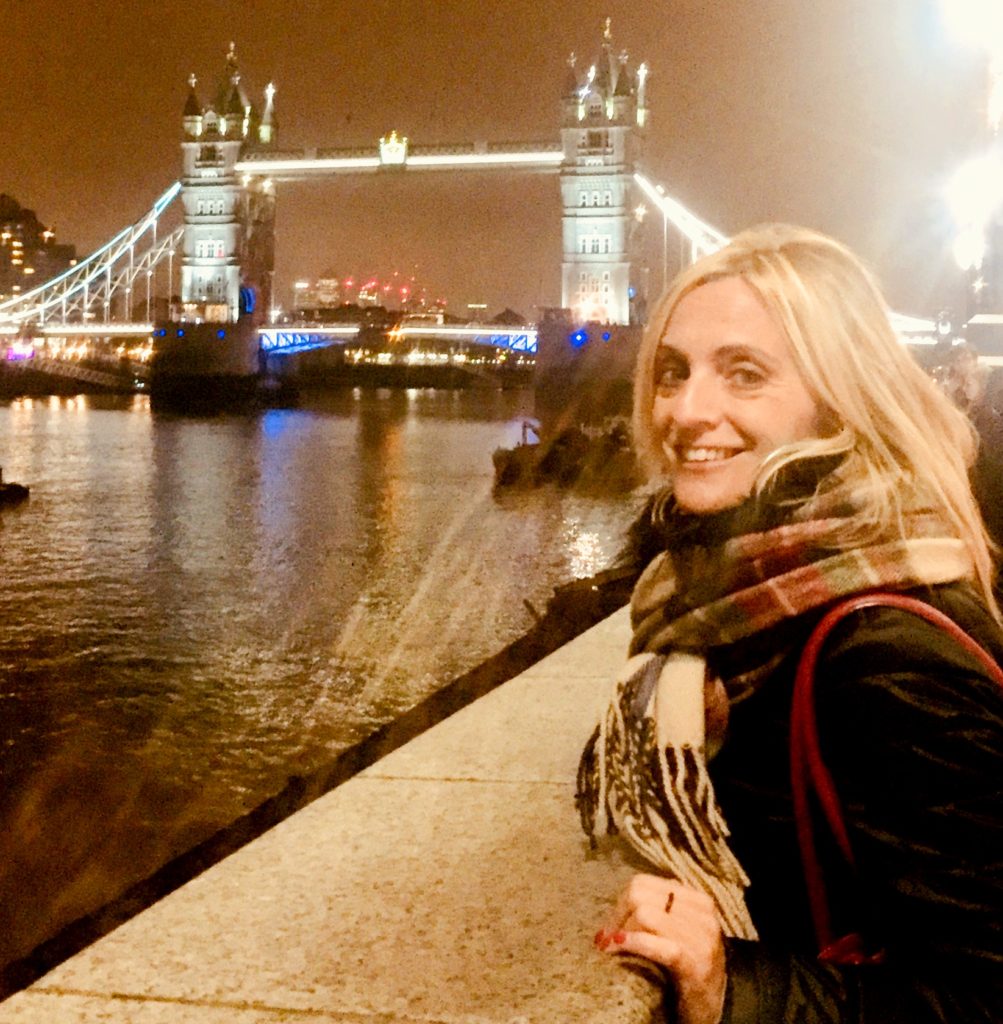“Nothing in the world is more common than unsuccessful people with talent, leave the house before you find something worth staying in for. ”
Banksy
Banksy, l’anima pop di Bristol
Classe 1974, Banksy è uno degli street artist più famosi al mondo. Non ci sono dubbi al riguardo! Nel giro di poco tempo la sua notorietà è aumentata sempre di più. Originario di Bristol la sua esistenza è avvolta dall’anonimato, che a quanto pare inizialmente è stata involontaria. Cosa che però per ovvie ragoni gli è tornata comoda, visto che ancora non ha deciso di mostrare il suo volto a nessuno!
Pare che sia stata colpa di alcuni giornalisti di Londra! Questi non avrebbero avuto molta voglia di identificare uno a uno a Bristol il personaggio che imbrattava la capitale inglese. Perciò hanno dato per scontato (non avendo mai saputo realmente chi fosse) che Banksy si mantenesse in incognito per volontà sua. Scopriamo qualcosa di più su questo personaggio straordinario in questo articolo!
Chi è Banksy?
Chi è Banksy allora? Bella domanda! Ci sono varie ipotesi , tra cui quella che sia una donna o addirittura un gruppo di sconoscuti. Comunque, in riferimento alle tesi più accreditate del momento, una di queste due personalità potrebbe essere Banksy:
- Robin Gunningham : questi è uno studente della ‘Bristol Cathedral Choir School’ con la passione per il disegno. Gli studiosi avrebbero notato un esatto riscontro tra la geografia dei suo spostamenti lavorativi e quelli di Banksy . Una supposizione portata avanti per avere ricorso al cosiddetto ‘profilo geografico criminale’. Questa è una metodologia investigativa molto sofisticata . Essa permette di rintracciare i delinquenti attraverso una valutazione delle dislocazioni delle locations dei loro crimini. Una ricerca della ‘Queen Mary University di Londra’ avrebbe avvalorato questa teoria, che era già apparsa nel 2008;
- Robert Del Naja : questi è il cantante dei ‘Massive Attack’ , che è un’ illustre band musicale di Bristol. In precedenza era anche un artista di strada , che si faceva chiamare ‘3D’. Banksy lo ha citato più volte come base di forte ispirazione artistica. Su queste affermazioni si è buttato il giornalista investigativo Craig Williams , che ha dichiarato che i due sono la stessa cosa. Alla luce anche di alcune corrispondenze tra dei concerti de ‘Massive Attack’ e l’apparizione di graffiti firmati da Banksy.
Banksy, qualcosa sulla sua biografia
Come potete capire Banksy è un rebus da risolvere. Ma questo ha ulteriormente rafforzato il suo successo. Ci sono molti comunicati sparsi sulla sua biografia. Come per esempio la leggenda legata al suo nickname, che farebbe riferimento alle sue doti calcistiche. Infatti pare sia stato inventato in base al nome del mitico portiere Gordon Banks . A diffondere questa congettura sarebbe stato Nobby Stiles, calciatore del Manchester .
Sveliamo qualcosa sulla sua famiglia e la sua adolescenza secondo alcuni studi pubblicati sul ‘Mail on Sunday’ nel 2008. Banksy sarebbe cresciuto a Yate, un sobborgo piuttosto malandato di Bristol . Figlio di un tecnico stampanti e di un’infermiera, avrebbe frequentato una scuola privata. Ma non si sarebbe mai iscritto a nessuna facoltà a indirizzo artistico.
‘Barton Hill’, starting point dell’arte di Banksy
Dati più sicuri sono quelli che riguardano la susseguente carriera di Banksy . A ‘Barton Hill’ , un’ area periferica di Bristol, sarebbe iniziato il suo amore per la street art . Cosa che si è concretizzata inizialmente nel dipingere le pareti di un’assocazione giovanile di accoglienza.
Successivamente nel 2000 Banksy si è trasferito a Londra , che ha rappresentato il trampolino di lancio per i suoi primi esordi artistici (soprattutto da Shoreditch a Portobello Road). Da allora in poi si è spostato parecchio, e negli USA è rimasto per ben un mese.
L’arte secondo Banksy
La street art di Banksy è irriverente, ribelle ed è intrisa di una satira pungente. Le sue opere sono graffiti che hanno come tema:
- Politica;
- Cultura;
- Etica;
- Brutalità della società moderna;
- Sfruttamento degli animali.
Le tele di Banksy sono le superfici di spazi pubblici in disuso e abbandonati . Un modus operandi di natura anarchico e sovversivo, che spesso gli ha causato guai con la legge!
Oltretutto per scongiurare l’arrivo della polizia e velocizzare i tempi delle sue creazioni, Banksy è dovuto ricorrere alla tecnica dello stencil .
Cosa è lo stencil?
Cosa è lo stencil ? Si tratta di riprodurre sagome sui muri attraverso degli stampi di carta, che poi sono spruzzati di colore nero . Suo maestro in questo campo è stato l’artista francese Blek Le Rat. La conferma della sua firma la rivela attraverso i suoi canali sociali, come quello di instagram.
Lo stencil è per Banksy qualcosa di immediato da realizzare , ma che parimenti affida all’apparente e voluta semplicità della composizione il compito di denunciare ogni forma di abuso. Con tutti i problemi e le difficoltà della nostra società a Banksy non mancheranno certamente gli spunti per avere altro per cui fare rivoluzioni con bombolette a spray!
7 memorabili tasselli del mosaico Banksy!
Banksy è un artista poliedrico che spazia da opere di strada di enormi dimensioni a progetti multimediali e di altro genere. Non si sa mai cosa gli salta in mente. E credo che sia questa la sua arma vincente e il segreto della sua popolarità. Altrimenti non si spiegherebbe come mai si fanno art exhibition rivolte al suo genio artistico in ogni angolo del pianeta.
In basso vi propongo delle pazzie artistiche di Banksy che lo hanno immortalato nell’eternità. Da quadri che ha fatto fuori mentre erano acquistati a prezzi vertiginosi a negozi che hanno avuto la durata di un battito di ciglia. E il bello penso che debba ancora venire. Ci si può aspettare davvero di tutto da Banksy!
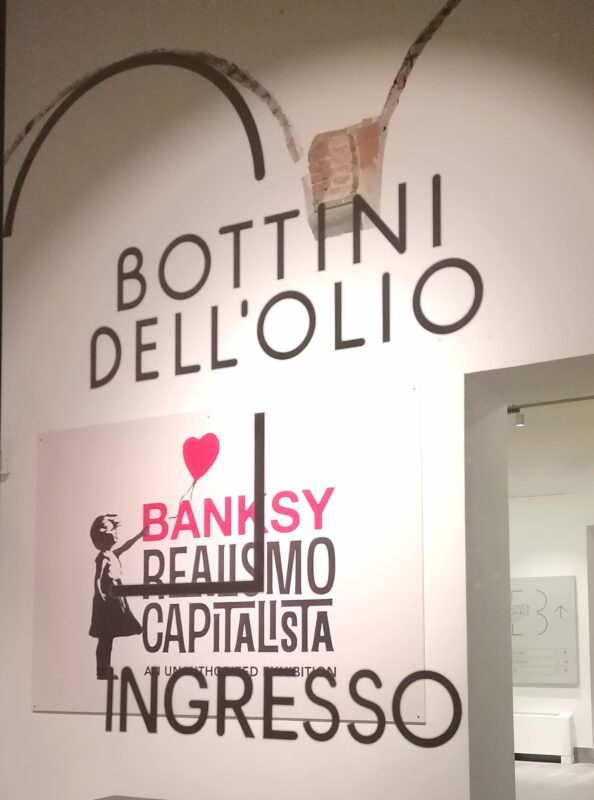
‘The Girl with the balloon’
‘The Girl with balloon’ del 2022 è il graffito di una bambina che lancia un palloncino rosso a forma di cuore. Simbolo indiscusso di speranza, esso si ammira nelle scale del ‘Waterloo Bridge’ sul lato di ‘South Bank’ a Londra.
Nel 2018 l’iconica ragazzina venne battuta all’asta di ‘Sotheby’s’ per poi essere distrutta nello stesso attimo della vendita! Aperta protesta quella di Banksy contro la mercificazione dell’arte. Nel 2019, più di 500 suoi lotti sono stati battuti per un valore di circa 23 milioni di dollari.
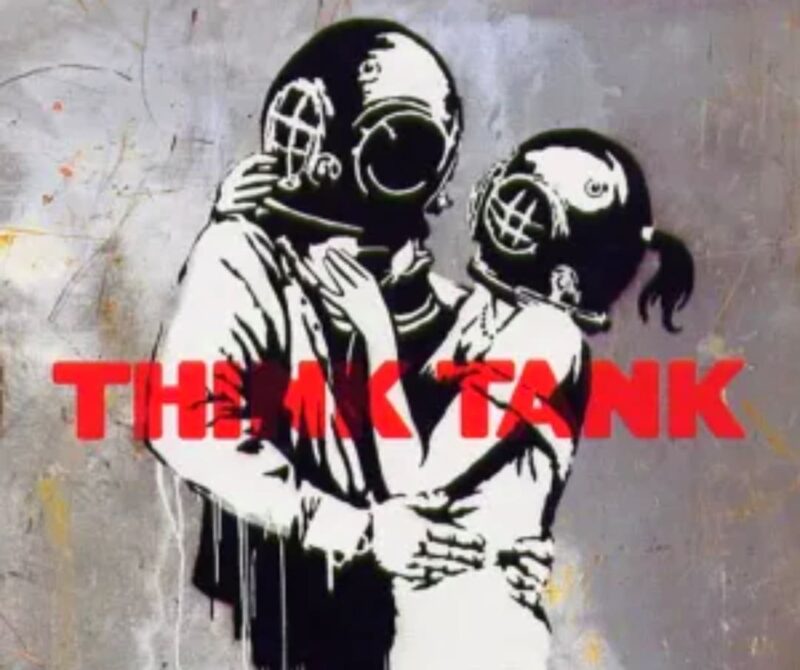
2. ‘Think Tank’
Nel 2023 Banksy ha eseguito il disegno per la copertina di ‘ThinkTank’, settimo album dei ‘Blur’ . Il gruppo musicale era stato già reduce da molt problemi di salute e perdizione dei singoli membri. Il disco era nato in Marocco , dove avrebbero abitato in una sorta di riad tra gli ulivi.
Le visioni avute a Marrakech, furono tante insieme a dissenteria. Tra le loro visioni mistiche si racconta di ambulanti andalusi che strimpellavano melodie senza senso , o trattori presi a bastonate e altre follie. Per cui Banksy è stato il fiore all’occhiello per etichettare le loro note più popolari.
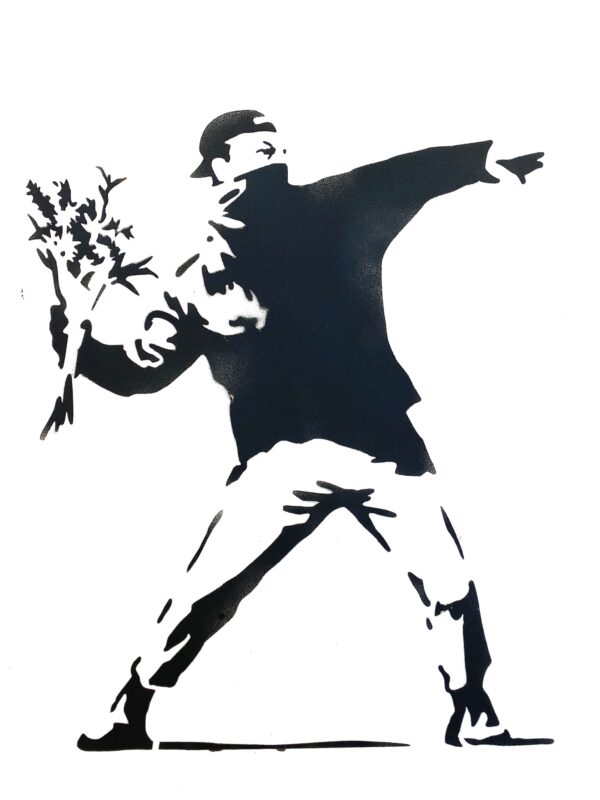
3. ‘Flowers’
‘Flowers’ del 2005 è il graffito di un manifestante con il volto coperto che lancia un mazzo di fiori. Anche qui c’è allusione al desiderio di pace. ‘Flowers’ è stato fatto sulla cortina eretta da Israele per isolare la Cisgiordania.
In questi paraggi nel 2017 Banksy ha pure arredato il ‘Walled Off Hotel’ . Questo è un albergo gioiello, e volutamente ha decorato le stanze con affaccio sulla barriera di separazione israeliana a Betlemme. Un gesto decisamente provocatorio per attirare l’attenzione verso questa realtà disumana.
Altre cose strane di Banksy!
- Pubblicazione di una parodia del CD di Paris Hilton nel 2006 con immagini modificate della biondissima ereditiera;
- Festival sulla stencil art a Londra nel 3-05 Maggio del 2008 per ironizzare sul ‘Cannes Festival’ . Gli invitiati sono state le stelle della street art internazionale. La manifestazione è stata allestita in un tunnel a Leake Street (usata da sempre come bagno publico!). Il risultato è stato un tripudio di graffiti che hanno abbelito una parte decadente della megalopoli. Un angolo che Banksy ha anche adoperato come cinema per l’uscita del suo documentario ‘Exit through the Gift Shop’ (2010) , che parla del trionfo della street art a Los Angeles;
- ‘Dismaland’ nel 2015 questo è un parco divertimento nei pressi di Londra che però venne chiuso nel settembre dello stesso anno. Un inno alla futilità dei piaceri moderni. Liquidazione dei suoi pezzi migliori al negozio di tappezzeria ‘Gross Domestic Product’ nel 2019 a ‘Croydon’sud di Londra. Un mercatino che è durato due settimane, che è stato destinato solo ai redditi più bassi! Il ricavato è stato devoluto a delle ONG per compare navi di salvataggio per profughi. Pare che questa sua trovata fosse legata a una controversia da tribunale avuto con un’azienda di cartoline.
Difficilmente si potrà mai avere un’idea completa di Banksy . Per questa ragione bisogna accontentarsi di pillole informative sul suo conto . Senza logicamente dare mai nulla per definitivo, perché ci potrebbe sempre essere qualche altra stupefacente novità che stravolge!
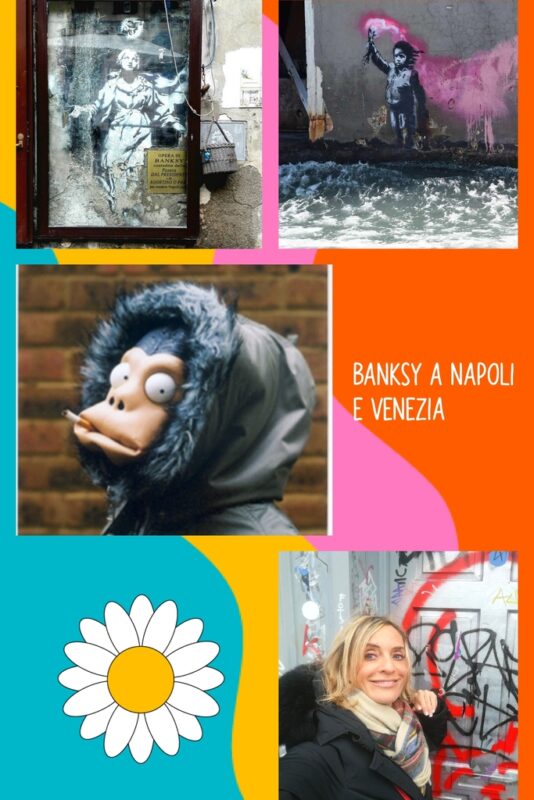
Banksy in Italia
Anche in Italia sono presenti opere di Banksy:
- A Napoli è ancora visibile la ‘Madonna con la pistola’ presso Piazza dei Girolamini, nel centro storico . L’arma in sosituzione dell’aureola sulla testa della vergine è un invito a realizzare che c’è un forte legame tra la criminalità organizzata e la religione;
- A Venezia è apparso il ‘Naufrago bambino’ , un piccolo disperso che prova farsi notare lanciando un razzo segnaletico rosa . Questo murales è apparso vicino a ‘Campo Santa Margherita’ in occasione della 58° edizione della ‘Biennale d’ Arte a Venezia’ . Il protagonista potrebbe essere veicolo di attacco contro la la situazione dei migranti nel Mediterraneo.
Non si finisce mai con Banksy!
Impossibile dilungarsi ancora su tutto quello che è l’arte di Banksy . Tra le altre cose spesso si è presentato all’interno dei più gradi musei del globo. Ci ha lasciato di nascosto caricature di capolavori . Ovviamente l’intento è stato quello di sottolineare il suo essere un fiero detrattore del feticismo collezionistico.
Banksy non finisce mai di stupire. Adesso vi propongo di seguito qualche chicca del genio della bomboletta , che ho beccato negli angoli più nascosti di Bristol .
If you like my post, please subscribe to the socials of www.WeLoveitaly.eu :





